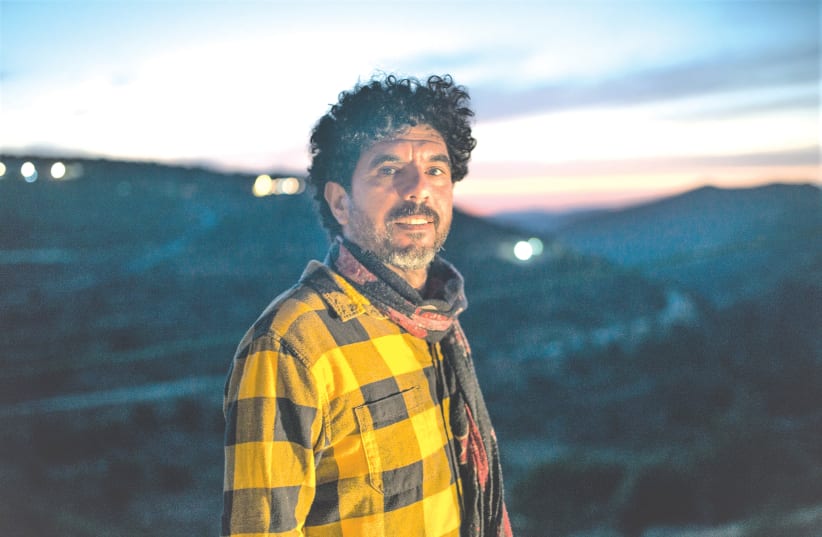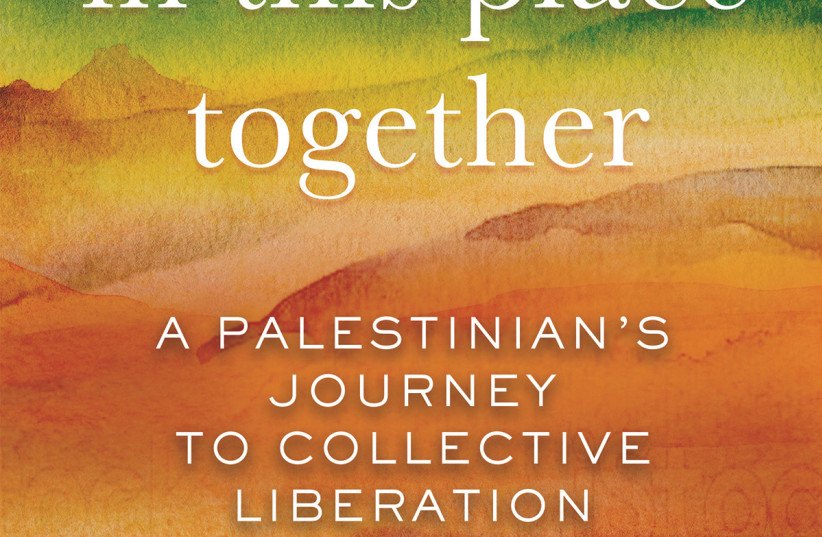A little over two years ago, I met Sulaiman Khatib at a coffee shop in downtown Jerusalem, to interview him for a blog post about the organization of which he is a leading member, Combatants for Peace. We had a wonderful conversation – even though he smoked too many cigarettes – in which he shared with me a bit of his personal story as one who moved from being a militant when he was very young to becoming a serious and mature peace builder as an adult. During the conversation, he told me that he had found someone – an American Jewish woman peace activist – to help him write his story and publish a book. I told him then that when the book is published, I looked forward to reading it.
Well, I received the book a few months ago, and read it over the summer, and I’m glad I did! It is an enlightening and inspiring story of a remarkable person. The book is extremely well-written –with great humility and respect – by Penina Eilberg-Schwartz of the San Francisco Bay area. She portrays the transformation of Khatib, an extraordinary Palestinian peace builder, in a beautiful and empathetic way.
Who is Sulaiman Khatib?
He is a Palestinian peace activist, with an incredible personal story.
For many of the readers of this column, the term Palestinian peace activist might come as a bit of a surprise, or even an oxymoron. Perhaps you have never read about any such person before? Perhaps you have never met one? Perhaps you are in disbelief at the concept? If so, this is one good reason for you to read this book.
Khatib was born and raised in the village of Hizma, in the West Bank, 15 minutes north of Jerusalem. He grew up there in a modest Palestinian family, with deep connections to their village and land, as is the case with many Palestinians. As a child, the only ruling reality that he knew was that of Israeli occupation of his village and all of the West Bank. As a teenager, he became involved with young Palestinian militant activists – which was common and even cool in those days among Palestinian youth in his area – in resisting the Israeli occupation of the West Bank by throwing stones and Molotov cocktails at soldiers of the IDF, who were omnipresent in his life. Then, one day, he and some friends, stabbed some Israelis who were on an outing not far from his village. This of course got him in trouble with the Israeli authorities. Even though he was a minor, he was arrested and tried in a military court and sent to prison. He wound up staying in Israeli prisons for 15 years, first in the West Bank and then inside Israel proper.
During all these years in prison, Khatib grew and developed into a mature human being. He read a lot, talked with people, including some of his Jewish-Israeli prison guards, and began to change his attitudes to Israel and to the conflict. Eilberg-Schwartz does a great job in portraying his transformation and growth during these years in prison and afterwards. Parts of the book almost read like a surrealistic novel. It a poignant and perhaps prophetic story. In her portrayal of his life, she even talks about how many people see Khatib as a prophet. While this may be exaggerated, he clearly demonstrates some of the qualities of a biblical prophet by systematically and substantially stressing the need for peace between Israeli Jews and Palestinian Arabs in a persistent and committed way, in all of his story-telling and activism.
How did Eilberg-Schwartz meet Khatib? In a note from her at the beginning of the book she tells us that she met Souli – which is his nickname – at the home of her mother, Rabbi Amy Eilberg, in 2006. I was not surprised to learn this since I know her mother as one of the leading interreligious peace activists in the US. From that time, she developed her own relationship with Khatib, over many years, so much so that he entrusted her to tell his story in writing. This was a wise move, since she has done a very sensitive and serious portrayal of him. In her note, she explains how she first heard him tell his story, when he gave a talk at the University of California at Berkeley. She was impressed by the nonchalance of his story-telling, by the way he talked about his own history in a light way, and at the same time by the profundity of it. I would say the same think about this book. In addition, she adds a philosophical/literary comment about the art of storytelling:
Even when he relates his story, in his own voice, he is only telling versions. That’s how it is for all of us. Developing a story is the act of deciding what to emphasize, what to leave out. And Souli doesn’t think this is a bad thing. On a collective level, he struggles both with and against this phenomenon to build a story – a third narrative – that includes Jewish and Palestinian histories, and all the places they overlap. His whole life has led to this reimagining. This, he thinks now, is how the world will get better.
Her reference to a third narrative reminded me of a book that I read several years ago by Stephen R Covey (author of The 7 Habits of Highly Effective People) titled The Third Alternative. In a chapter titled “The 3rd Alternative in the World,” in which Covey wrote about the work of several Palestinian Arab and Jewish Israeli peace builders (including yours truly), he said:
We all have a stake in the peaceful, creative solutions that 3rd Alternative Thinking can bring to our local communities, our states and our nations. We need nothing less than a revolution in the way we debate and practice diplomacy. There are many exemplary people who are trying to get to the 3rd Alternative in the Middle East and their efforts can teach us much about the kind of synergy that’s possible in our own circles of influence.
This idea of the third narrative or Third Alternative Thinking – learning and telling both the Israeli and Palestinian narratives of the history of current state of the Israeli-Palestinian conflict and then integrating them into one collective narrative – is one of the main themes of the book, if not its central message and its most salient lesson for all of us. In Khatib’s note at the beginning of the book, he reinforces this point:
By telling my story, I want to humanize the headlines as much as possible. To show the complexity and the beauty and the ugliness and the pain and the hope to share what I went through, what our communities – both Palestinian and Jewish – continue to go through. I hope to use my little bit of knowledge to give a different look, from different sides… To hold multiple narratives is not easy. It is not easy to carry contradictions in your soul It’s much easier to see one side of the story, to blame the other, to live in victimhood. To feel that all the world is against you, that everyone wants to kill you. But this is not reality. The history of Palestine and Israel has been told in many ways, and if we want a better future, we must gather the pieces and form them into a new shared story.
This is exactly what Eilberg-Schwartz and Khatib have done in this groundbreaking new book. By telling the amazing story of the transformation of a militant to a peace builder, they have not only told the story of one person. Rather, they have shifted the discourse from one-dimensional, narrow-minded, closed thinking to a much more multi-faceted way of understanding the conflict and of moving forward towards a new reality.
This important book deserves to be read by anyone who is interested in knowing about people who are seeking ways to transform the Israeli-Palestinian conflict from one of enmity to one of peaceful coexistence, for the mutual benefit of both peoples. It is a book about hope and about the need to persist in pursuing peace. At the end of the day (and at the end of this book), Sulaiman Khatib confesses that he is by nature an optimist. His optimism is shared by other peace and civil rights activists, including myself. Among others, he was inspired by the writings of US Congressman John Lewis, who wrote:
Do not get lost in a sea of despair. Be hopeful. Be optimistic. Our struggle is not the struggle of a day, a week, a month or a year; it is the struggle of a lifetime. Never, ever be afraid to make some noise and get in good trouble, necessary trouble.
As the co-founder and external relations coordinator for Combatants for Peace, Khatib continues the struggle – with other Jewish and Palestinian peace builders – toward the goal of creating a new reality –a more hopeful one – for Israeli Jews and Palestinian Arabs and for humanity.

